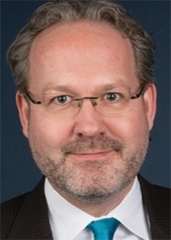Engaging students in a field-based, problem-oriented, experiential course
March 23, 2020
This post is republished from Into Practice, a biweekly communication of Harvard’s Office of the Vice Provost for Advances in Learning
 Jorrit de Jong, Lecturer in Public Policy, combines practice, research, and engagement with learning and teaching in his course Innovation Lab: Public Problem Solving in Massachusetts Cities, in which students participate in a field-based, problem-oriented, and experiential setting, immersed in local city governments. Students observe, first-hand, the work of public servants—going on inspection tours, triaging cases, analyzing geo-spatial data, reconciling competing priorities and politics—and then pitch proposals to city mayors, usually building on the work of previous students.
Jorrit de Jong, Lecturer in Public Policy, combines practice, research, and engagement with learning and teaching in his course Innovation Lab: Public Problem Solving in Massachusetts Cities, in which students participate in a field-based, problem-oriented, and experiential setting, immersed in local city governments. Students observe, first-hand, the work of public servants—going on inspection tours, triaging cases, analyzing geo-spatial data, reconciling competing priorities and politics—and then pitch proposals to city mayors, usually building on the work of previous students.
The benefits: Students who enter the course with idealistic notions of creating sweeping changes come to understand the importance of incremental change, especially in places like city government. “People have worked on this before you and they will work on it after you,” says de Jong. As a result, students learn the value of working in the “zone of proximal development,” which enhances both their learning experiences at Harvard and their post-graduation careers.
The challenges: The semester’s length imposes constraints on the kind of learning de Jong fosters. “You have to find a sweet spot where students can grapple as long as possible with a problem before they start thinking about solutions.” He builds in time for students to approach problems from multiple angles and navigate organizational realities, warning from the start that they will need to get comfortable with ambiguity. This applies to the instructor as well: de Jong has to be flexible and allow room for processing different problems or ideas that surface in students’ field experience.
Takeaways and best practices
- Encourage “teaming” as part of the design process. De Jong forms diverse teams so that students are forced to think in new ways. Team building is baked into the first half of the semester with students developing a “flight plan” to launch their work together and move from discovery to design to delivery. Teams also have mandatory office hours with de Jong for additional coaching on content and collaborative processes.
- Build institutional memory for the course. After the course ends in the spring, de Jong hires former students as fellows to sustain engagement with the cities and work with them on implementation. In the fall, he assigns coordinators to scope issues for the following semester and prepare to coach the new student teams. Documentation from each iteration is curated into Dropbox. “Students start their projects by reviewing the work of the previous teams—what did they present to the mayor? what was implemented? what did the coordinator scope out? —so they can easily pick up where others left off.”
- Use reflections as a metric for learning. At the beginning of the semester, students are required to reflect on a time they were an agent of change—highlighting what went well, what was challenging, and in what ways they hope to develop through the course. At the end of the semester, they complete a similar assignment, but reflect on their work during the course, which provides qualitative data for de Jong to assess students’ learning.
Bottom line: Grounding students in the realities of city government work provides a pragmatic framework for working effectively as innovators and agents of change in the public sector. Some of de Jong’s proudest moments have been seeing many of his students take positions in local government after graduating.

